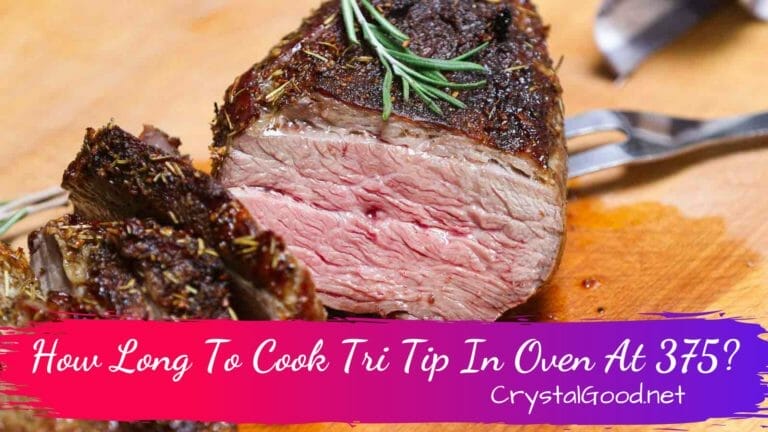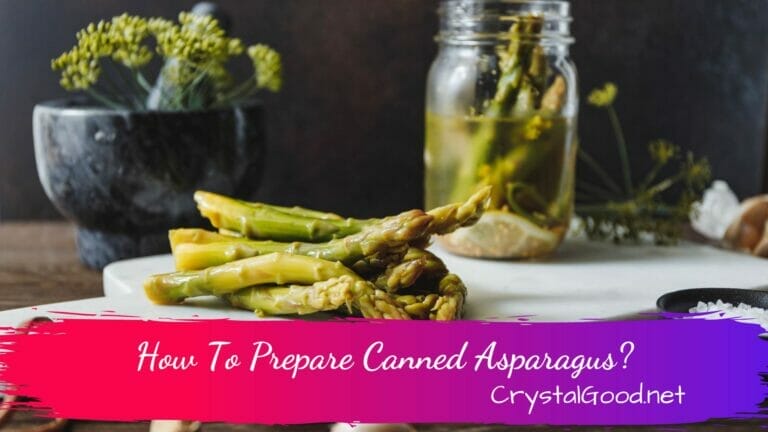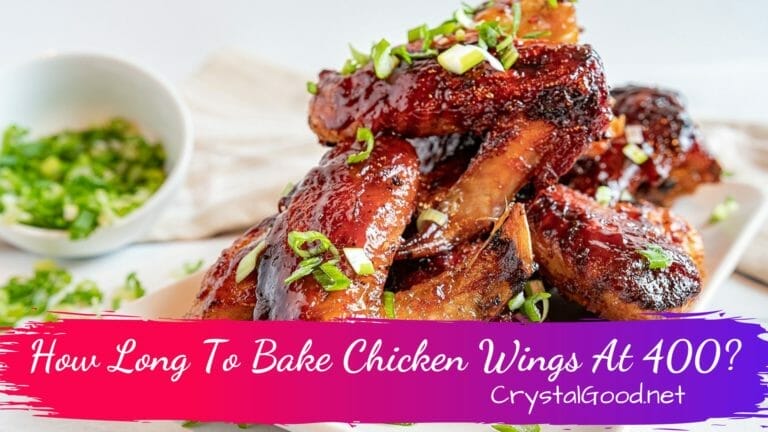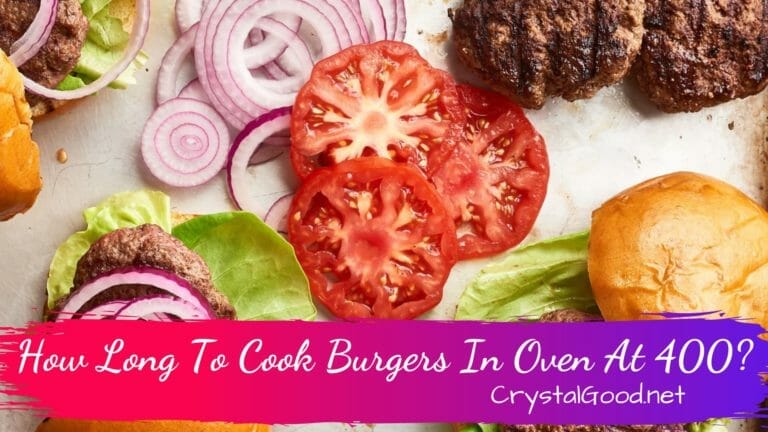Cooking with a cast iron skillet is a great way to get delicious, flavorful meals. But before you can start cooking with your cast iron skillet, you need to season it. Seasoning a cast iron skillet is a simple process that helps to create a non-stick surface and prevents rust. In this guide, we’ll walk you through the steps of how to season a cast iron skillet so you can get cooking with your new kitchen tool.
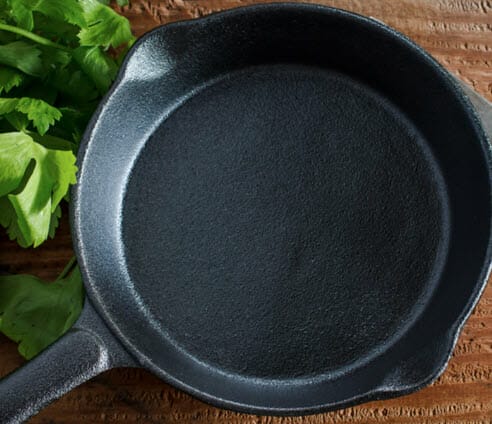
Step-by-Step Guide to Seasoning a Cast Iron Skillet
Contents
- 1 Step-by-Step Guide to Seasoning a Cast Iron Skillet
- 2 The Benefits of Seasoning a Cast Iron Skillet
- 3 How to Clean and Maintain a Cast Iron Skillet
- 4 The Best Oils to Use for Seasoning a Cast Iron Skillet
- 5 How to Tell When Your Cast Iron Skillet Needs to be Re-Seasoned
- 6 The Difference Between Pre-Seasoned and Unseasoned Cast Iron Skillets
- 7 Tips for Cooking with a Cast Iron Skillet
- 8 The Pros and Cons of Cooking with a Cast Iron Skillet
- 9 FAQs:
- 10 1. What is the best way to season a cast iron skillet?
- 11 2. How often should I season my cast iron skillet?
- 12 3. What type of oil should I use to season my cast iron skillet?
- 13 4. Can I use cooking spray to season my cast iron skillet?
- 14 5. Can I use soap to clean my cast iron skillet?
- 15 6. How do I remove rust from my cast iron skillet?
- 16 7. Can I use my cast iron skillet on a stovetop?
- 17 8. Can I use my cast iron skillet in the oven?
- 18 Conclusion
Step 1: Preheat your oven to 350°F.
Step 2: Scrub your skillet with hot, soapy water and a stiff brush.
Step 3: Dry the skillet thoroughly with a clean cloth.
Step 4: Rub a thin layer of vegetable oil or melted shortening onto the skillet.
Step 5: Place the skillet upside down on the middle rack of the preheated oven.
Step 6: Bake the skillet for one hour.
Step 7: Turn off the oven and let the skillet cool completely before removing it.
Step 8: Wipe off any excess oil with a clean cloth.
Step 9: Enjoy your perfectly seasoned cast iron skillet!
Congratulations! You’ve just seasoned your cast iron skillet and it’s ready to use. With proper care and maintenance, your skillet will last for years to come. Enjoy your delicious meals!
The Benefits of Seasoning a Cast Iron Skillet
Seasoning a cast iron skillet is a great way to keep your skillet in top condition and make sure it lasts for years to come. Not only does it help protect the skillet from rust and corrosion, but it also helps to create a non-stick surface that makes cooking easier and more enjoyable. Here are some of the benefits of seasoning a cast iron skillet:
1. Improved Non-Stick Surface: Seasoning a cast iron skillet helps to create a non-stick surface that makes cooking easier and more enjoyable. This non-stick surface helps to prevent food from sticking to the skillet, making it easier to clean and maintain.
2. Increased Durability: Seasoning a cast iron skillet helps to protect it from rust and corrosion, which can cause the skillet to deteriorate over time. This helps to increase the lifespan of the skillet and ensure that it lasts for years to come.
3. Enhanced Flavor: Seasoning a cast iron skillet helps to create a unique flavor that can’t be achieved with other types of cookware. This flavor is created by the seasoning process, which helps to create a unique flavor that can’t be achieved with other types of cookware.
Seasoning a cast iron skillet is a great way to keep your skillet in top condition and make sure it lasts for years to come. Not only does it help protect the skillet from rust and corrosion, but it also helps to create a non-stick surface that makes cooking easier and more enjoyable. Plus, it helps to create a unique flavor that can’t be achieved with other types of cookware. So, if you’re looking for a way to keep your cast iron skillet in top condition, seasoning is the way to go!
How to Clean and Maintain a Cast Iron Skillet
Cleaning and maintaining a cast iron skillet is easy and rewarding! With a little bit of care, your cast iron skillet will last you a lifetime. Here are some tips to help you keep your skillet in tip-top shape.
1. Cleaning: After each use, rinse your skillet with hot water and use a stiff brush to remove any stuck-on food. Avoid using soap, as it can strip away the seasoning on your skillet. If you need to use soap, use a mild dish soap and rinse it off thoroughly.
2. Drying: After cleaning, dry your skillet with a paper towel or a clean cloth. Make sure to dry it completely to prevent rusting.
3. Seasoning: To keep your skillet in good condition, it’s important to season it regularly. To do this, heat your skillet over medium heat for a few minutes. Then, turn off the heat and add a thin layer of oil (such as vegetable oil or flaxseed oil). Use a paper towel to spread the oil evenly over the skillet. Place the skillet back on the heat and let it heat up for a few minutes. Turn off the heat and let the skillet cool. Repeat this process a few times to ensure your skillet is well-seasoned.
4. Storage: To prevent rusting, store your skillet in a dry place. If you’re not using it for a while, you can also wrap it in a paper towel and place it in a sealed plastic bag.
With these tips, you’ll be able to keep your cast iron skillet in great condition for years to come! Enjoy cooking with your skillet and don’t forget to season it regularly.
The Best Oils to Use for Seasoning a Cast Iron Skillet
Seasoning a cast iron skillet is an important part of maintaining its non-stick properties and ensuring it lasts for years to come. The best oils to use for seasoning a cast iron skillet are those that are high in saturated fat and have a high smoke point. These include vegetable oils such as canola, peanut, and sunflower oil, as well as animal fats like lard and tallow.
Canola oil is a great choice for seasoning a cast iron skillet because it has a high smoke point of 400°F and is low in saturated fat. It also has a neutral flavor, so it won’t impart any unwanted flavors to your food.
Peanut oil is another great option for seasoning a cast iron skillet. It has a high smoke point of 450°F and is high in monounsaturated fat, which makes it a healthier choice than other oils. It also has a mild flavor that won’t overpower your food.
Sunflower oil is another great choice for seasoning a cast iron skillet. It has a high smoke point of 450°F and is high in polyunsaturated fat, making it a healthier option than other oils. It also has a mild flavor that won’t overpower your food.
Animal fats like lard and tallow are also great choices for seasoning a cast iron skillet. They have a high smoke point of 400°F and are high in saturated fat, which helps to create a non-stick surface. They also have a mild flavor that won’t overpower your food.
No matter which oil you choose, make sure to apply it liberally and evenly to the skillet before heating it up. This will help to create a non-stick surface that will last for years to come.
How to Tell When Your Cast Iron Skillet Needs to be Re-Seasoned
It’s easy to tell when your cast iron skillet needs to be re-seasoned! Here are a few signs that it’s time to give your skillet some love:
1. Food sticks to the surface: If your food is sticking to the surface of your skillet, it’s a sure sign that it needs to be re-seasoned.
2. Rust spots: If you notice any rust spots on your skillet, it’s time to re-season it.
3. Dull color: If your skillet has lost its luster and has a dull color, it’s time to give it a good seasoning.
4. Greasy residue: If you notice a greasy residue on your skillet, it’s time to re-season it.
Re-seasoning your cast iron skillet is easy and will help keep it in top condition. So don’t wait until it’s too late – give your skillet some love and re-season it today!
The Difference Between Pre-Seasoned and Unseasoned Cast Iron Skillets
When it comes to cooking with cast iron skillets, you have two options: pre-seasoned and unseasoned. Both have their advantages and disadvantages, so it’s important to understand the difference between the two before you make your purchase.
Pre-seasoned cast iron skillets are ready to use right out of the box. They have been treated with a special oil that helps to create a non-stick surface. This makes them ideal for cooking delicate foods like eggs and fish. The downside is that pre-seasoned skillets are more expensive than unseasoned ones.
Unseasoned cast iron skillets require a bit of extra work before they can be used. They must be seasoned with oil before they can be used. This process helps to create a non-stick surface and also helps to prevent rust. The upside is that unseasoned skillets are usually cheaper than pre-seasoned ones.
In the end, it’s up to you to decide which type of cast iron skillet is best for your needs. If you’re looking for convenience, then pre-seasoned skillets are the way to go. If you’re looking for a more affordable option, then unseasoned skillets are the way to go. Either way, you’ll be able to enjoy the benefits of cooking with cast iron.
Tips for Cooking with a Cast Iron Skillet
1. Preheat your skillet: Before you start cooking, preheat your skillet over medium-high heat for a few minutes. This will help ensure that your food cooks evenly.
2. Use oil: To prevent sticking, make sure to use a generous amount of oil when cooking in your cast iron skillet.
3. Don’t use soap: To clean your skillet, use hot water and a stiff brush. Avoid using soap, as it can strip away the seasoning on the skillet.
4. Season regularly: To keep your skillet in good condition, season it regularly with oil. This will help prevent rust and keep your skillet looking great.
5. Don’t use metal utensils: To avoid scratching the surface of your skillet, use wooden or plastic utensils when cooking.
6. Use high heat: Cast iron skillets are great for high-heat cooking, such as searing and frying.
7. Don’t forget the lid: If you’re cooking something that needs to be covered, make sure to use the lid that came with your skillet. This will help keep the heat in and ensure that your food cooks evenly.
8. Enjoy the flavor: Cast iron skillets are great for adding flavor to your food. The skillet will absorb some of the flavors from the food, giving it a unique taste.
The Pros and Cons of Cooking with a Cast Iron Skillet
Cooking with a cast iron skillet has many advantages, but there are also some drawbacks to consider. Let’s take a look at the pros and cons of cooking with a cast iron skillet.
Pros:
• Durability: Cast iron skillets are incredibly durable and can last for decades with proper care.
• Heat Retention: Cast iron skillets retain heat very well, making them ideal for searing and browning meats.
• Versatility: Cast iron skillets can be used on the stovetop, in the oven, and even over an open flame.
• Non-Stick Surface: With proper seasoning, cast iron skillets can develop a non-stick surface that makes them ideal for cooking delicate foods like eggs and fish.
Cons:
• Weight: Cast iron skillets are heavy, making them difficult to maneuver.
• Maintenance: Cast iron skillets require regular seasoning and cleaning to prevent rust and maintain their non-stick surface.
• Temperature Sensitivity: Cast iron skillets can be sensitive to sudden temperature changes, so they should be heated and cooled slowly.
Overall, cooking with a cast iron skillet can be a great way to get delicious, evenly cooked meals. With proper care and maintenance, a cast iron skillet can last for years and provide delicious meals for your family.
FAQs:
1. What is the best way to season a cast iron skillet?
The best way to season a cast iron skillet is to coat it with a thin layer of vegetable oil or melted shortening and bake it in an oven at 350°F for one hour.
2. How often should I season my cast iron skillet?
It is recommended to season your cast iron skillet every few months or whenever it starts to look dull or rusty.
3. What type of oil should I use to season my cast iron skillet?
It is best to use vegetable oil or melted shortening to season your cast iron skillet.
4. Can I use cooking spray to season my cast iron skillet?
No, it is not recommended to use cooking spray to season your cast iron skillet as it can leave a sticky residue.
5. Can I use soap to clean my cast iron skillet?
No, it is not recommended to use soap to clean your cast iron skillet as it can strip away the seasoning.
6. How do I remove rust from my cast iron skillet?
To remove rust from your cast iron skillet, you can use a combination of baking soda and water to create a paste and scrub the rust away.
7. Can I use my cast iron skillet on a stovetop?
Yes, you can use your cast iron skillet on a stovetop, but it is important to make sure that the heat is not too high as it can damage the skillet.
8. Can I use my cast iron skillet in the oven?
Yes, you can use your cast iron skillet in the oven, but it is important to make sure that the temperature is not too high as it can damage the skillet.
Conclusion
Seasoning a cast iron skillet is an important part of maintaining the skillet and ensuring it lasts for years to come. It is a simple process that requires minimal effort and supplies, and the results are worth the effort. With proper care and seasoning, a cast iron skillet can last for generations and provide delicious meals for years to come.



